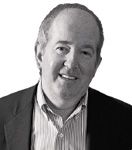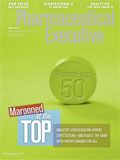Pharma 50 Comment: Seeding Beyond the Base
The industry's reputation as a growth industry no one wants to pay for is more secure than ever, writes Pharm Exec Editor William Looney.
THIS MONTH'S LEAD FEATURE is our annual snapshot on the state of the industry—the Pharm Exec 50. While numbers no longer provide the clarifying lens for a drugs market characterized by endless churn, we found some interesting insights nonetheless. First are the very significant pressures on growth, which are transforming an industry once associated with the open cash register to the lock box, where every last dime must be accounted for in the quarterly race for returns. EBITDA (earnings before interest, taxes, and depreciation/amortization), which essentially measures how efficiently a company is managing its assets, is the performance indicator to beat, at least according to Wall Street. Pinching those asset pennies is critical as 2011 revenues for the Pharma 50 rose only just above the rate of inflation, at 2.8 percent. In other words, the industry's reputation as that growth industry no one wants to pay for is more secure than ever.

William Looney
The Pharm Exec 50 numbers also show that the predominant response to tightening market conditions remains building on the advantages of size and scale, with the 10 largest companies in the 50 accounting for well over half of total revenues. The big players, however, are attempting to be nimble with their resources, as exemplified by the decision of the largest of the large, Pfizer, to enter the rare disease segment now dominated by smaller, specialized firms. The bottom ranks of the 50 are going for bulk too, but the transition is bumpy as witnessed by the fact that revenues of the smallest firms are collectively down from last year, where every company on the list had revenues of at least $2 billion. No more.
The advantages of size and scale are evident as well in the growing representation of biologics among the Pharm Exec 50's top product offerings, accounting for eight of the 20 biggest selling drugs. The challenge of manufacturing and promoting these complex medicines safely across multiple markets requires costly investments in state-of the-art technology and advanced know-how, not to mention a solid global orientation. A global base is even more important now that many regional markets—led by Western Europe—have tanked in the midst of the public debt pile-up, requiring a ruthless paring of domestic health spending. One result? More than €10 billion in unpaid bills for reimbursed medicines.
The lesson is an inducement for the industry's regional players to expand beyond borders if they wish to grow. Those that have done so comprise the more interesting additions to this year's list, including our first South African entry, Aspen Pharmacare, which is investing heavily in some of the mature markets.
The emphasis on being and staying big has its downside, if only because there is just not a lot of new blood vying for a place in the top ranks of the business. Looking back five years, to the Pharm Exec 50 of 2007, the top 10 companies are the same as this year's, with one exception—Wyeth, a victim of merger fever, has been replaced by Abbott. We see this as primarily good news for payers, who like to know the enemy from a position of intimacy, and not especially positive news for the patient. It's not that the biggest of Big Pharma aren't producing safer and better drugs for patients—the trend toward specialty meds and the utilization of companion diagnostics underscores this fact—but the constant need to meet forecasts and keep shareholders happy in the short-term perpetuates a climate anathema to risk, the bread and butter of innovation. Simply put, some shaking at the top means that more fruit falls from the trees.
And there are some promising signs of diversity towards the bottom of the list, particularly among companies that pose an implicit challenge to the conventional model built around a calculation of input x of R&D yielding output y of marketable products. It's a bit startling to see that one new entry to the Pharm Exec 50, Valeant Pharmaceuticals, the "search and development" company, managed to post $2.5 billion in sales while spending just over $65 million on research. That's a rounding figure for Pfizer—or more specifically, 0.7 percent of the industry leaders' $9.1 billion. If those numbers say anything at all, they reinforce the importance of this industry finding the right formula in balancing risky internal investments in innovation against expanding societal expectations for good medicines that deliver great outcomes. And that formula depends as much on luck—wedged by reputation—as it does on size.
William Looney Editor-in-Chief wlooney@advanstar.com Follow Bill on Twitter: @BillPharmExec

Regeneron, Roche Launch Major US Expansion Plans to Meet Growing Demand for Biologics and Innovation
April 22nd 2025With combined investments exceeding $53 billion, both companies are deepening their US presence through expanded biologics production, gene therapy capabilities, and next generation R&D centers.
Cell and Gene Therapy Check-in 2024
January 18th 2024Fran Gregory, VP of Emerging Therapies, Cardinal Health discusses her career, how both CAR-T therapies and personalization have been gaining momentum and what kind of progress we expect to see from them, some of the biggest hurdles facing their section of the industry, the importance of patient advocacy and so much more.